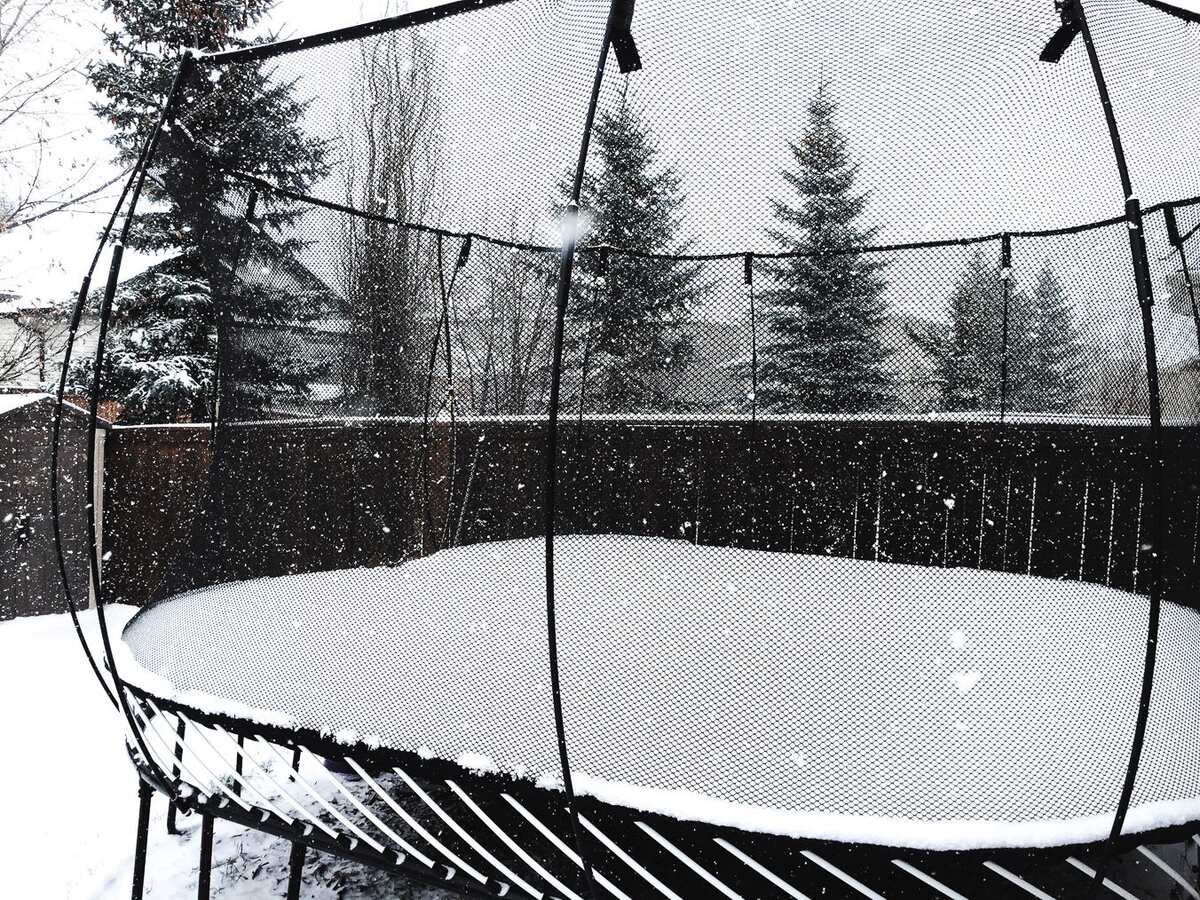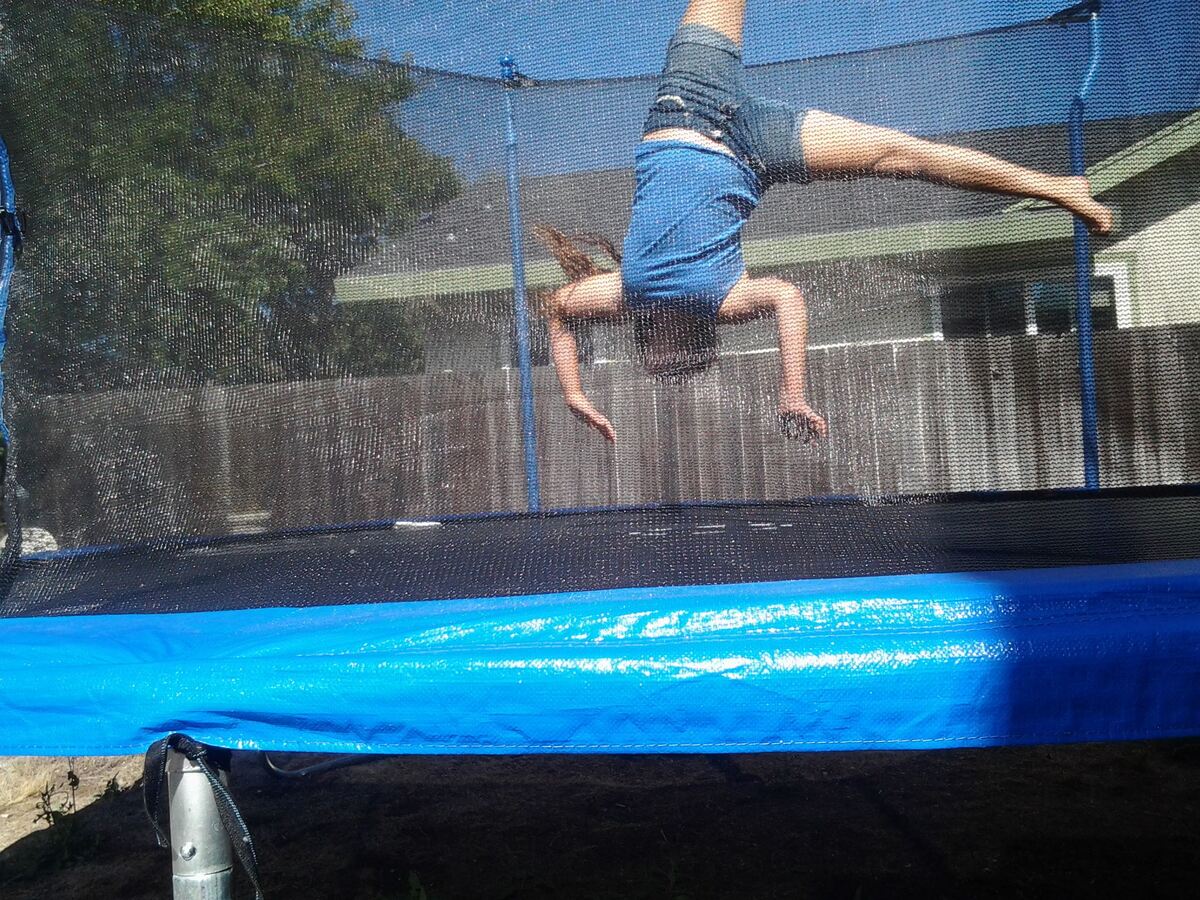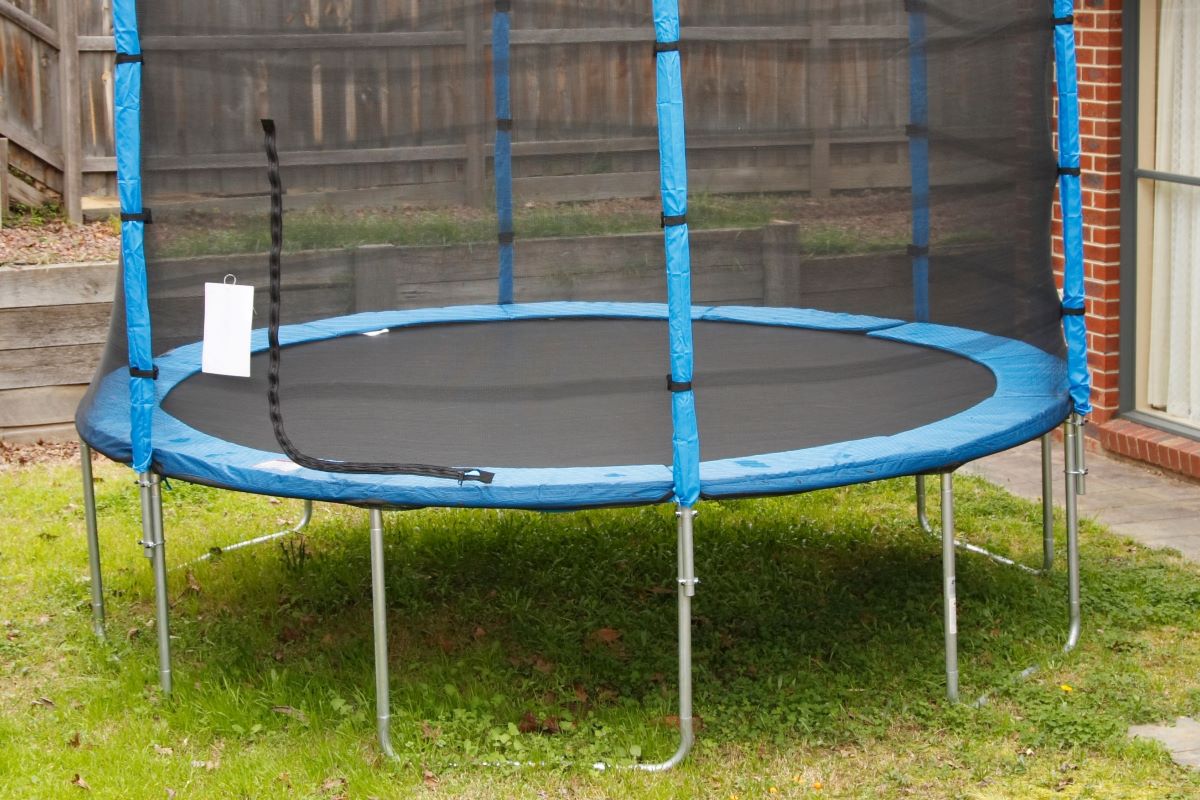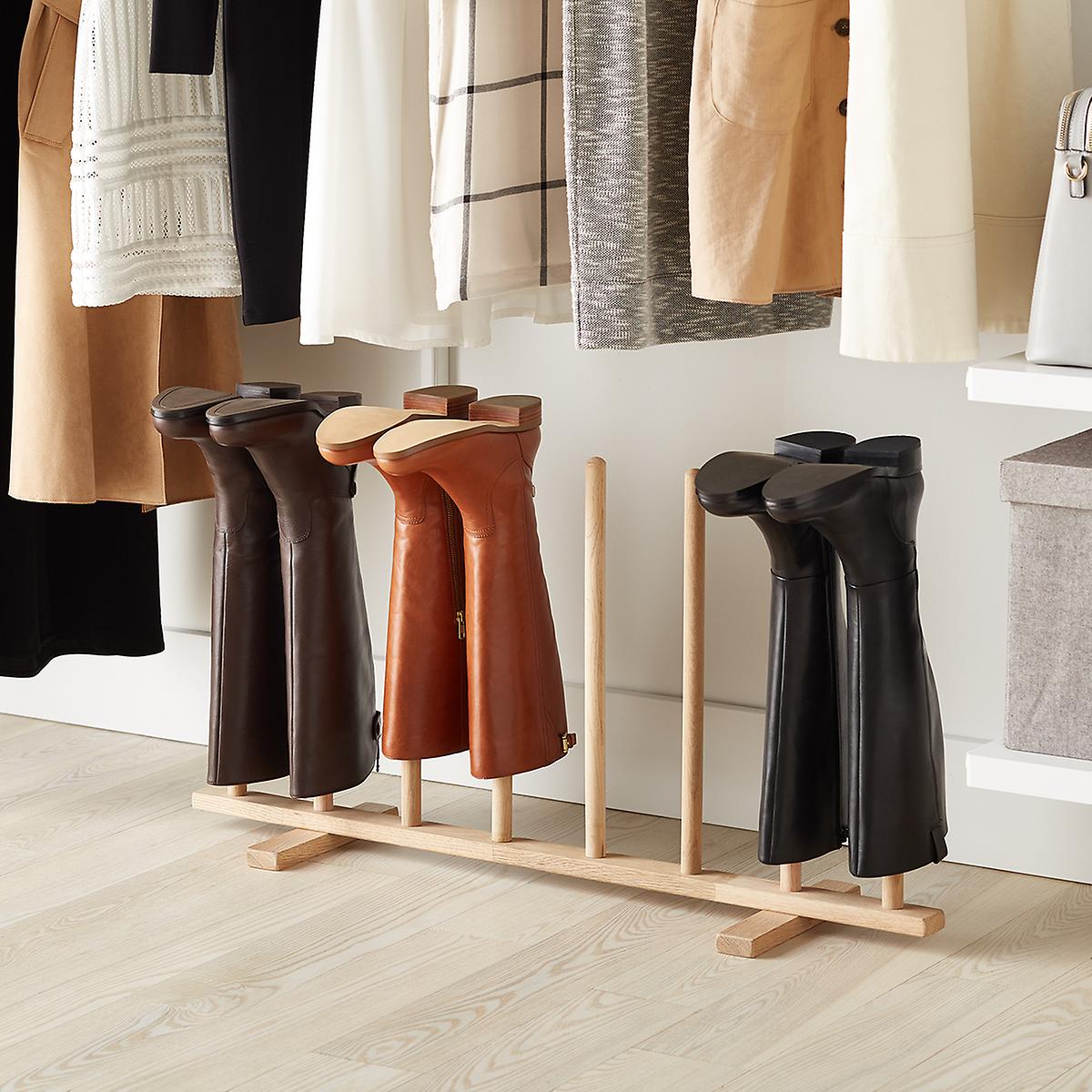Home>Gardening & Outdoor>Outdoor Recreation & Activities>How Do You Store A Trampoline In The Winter


Outdoor Recreation & Activities
How Do You Store A Trampoline In The Winter
Modified: April 22, 2024
Learn how to properly store your outdoor trampoline during the winter months to protect it from the elements and ensure it's ready for use when the weather warms up. Outdoor recreation and activities made easy!
(Many of the links in this article redirect to a specific reviewed product. Your purchase of these products through affiliate links helps to generate commission for Storables.com, at no extra cost. Learn more)
Introduction
As the vibrant hues of autumn give way to the frosty embrace of winter, outdoor activities often take a backseat to the chilly weather. Among the items that require special attention during this seasonal transition is the beloved trampoline. Whether it's a compact rebounder or a sprawling backyard trampoline, proper storage is essential to safeguard it from the harsh winter elements.
In this comprehensive guide, we'll explore the best practices for storing a trampoline during the winter months. From disassembling the components to protecting them from the elements, we'll cover everything you need to know to ensure that your trampoline remains in top condition for the next bouncing season. So, let's dive into the intricacies of trampoline storage and preservation, ensuring that your favorite outdoor play equipment emerges unscathed when the thaw arrives.
Key Takeaways:
- Properly disassemble, clean, and store your trampoline in a dry area to protect it from winter damage. Regular inspections and maintenance ensure it’s ready for bouncing fun when spring arrives.
- Use a high-quality cover or indoor storage to shield your trampoline from snow and moisture during winter. With proper care, it will be ready for use when warmer days return.
Read more: How To Store Trampoline In Winter
Disassembling the Trampoline
Before embarking on the trampoline storage journey, the first step is to disassemble the trampoline. This process not only facilitates easier storage but also helps in identifying any parts that may require maintenance or replacement before the next usage season.
Begin by removing the safety enclosure, if your trampoline is equipped with one. Detach the netting and carefully fold it for storage, ensuring that it remains clean and dry. Next, dismantle the springs from the frame. A spring tool can be immensely helpful in this task, making the process more efficient and less strenuous. As you remove the springs, inspect them for signs of wear or corrosion, and replace any damaged ones to maintain the trampoline’s safety and performance.
Once the springs are removed, disassemble the frame, taking care to keep all the components organized. It’s advisable to label the pieces or use a system to remember how they fit together, which will simplify the reassembly process when spring beckons. If your trampoline has a jumping mat, carefully detach it from the frame and clean it thoroughly before storage. Inspect the mat for any tears or damage, as addressing these issues promptly can prolong its lifespan and ensure safe usage in the future.
As you disassemble the trampoline, it’s a perfect opportunity to inspect each component for signs of wear, rust, or damage. This proactive approach allows you to address any issues before storing the trampoline, ensuring that it emerges from its winter hibernation in prime condition.
By methodically disassembling the trampoline and inspecting its components, you set the stage for a smooth and successful storage process. With the disassembly complete, it’s time to move on to the next crucial step: cleaning and drying the trampoline.
Cleaning and Drying the Trampoline
Once the trampoline is disassembled, it’s essential to thoroughly clean and dry each component before storage. This meticulous approach not only preserves the trampoline’s integrity but also helps prevent mold, mildew, and corrosion caused by trapped moisture.
Start by cleaning the jumping mat using a mild detergent and water. Gently scrub the surface to remove any dirt, debris, or stains. Avoid using harsh chemicals or abrasive cleaning tools, as these can damage the material. After cleaning, rinse the mat thoroughly with clean water and allow it to air dry completely. Ensure that the mat is free from moisture before proceeding to the next step.
Next, turn your attention to the trampoline frame and springs. Use a soft brush or cloth to remove any dirt, leaves, or other debris that may have accumulated. Inspect the frame and springs for signs of rust or corrosion, and address these issues promptly to prevent further deterioration. For metal components, applying a rust-inhibiting spray can provide an additional layer of protection during storage.
If your trampoline is equipped with a safety enclosure, clean the netting using a gentle detergent and water. After rinsing, allow the netting to air dry completely to prevent moisture retention. Inspect the netting for any tears or damage, and make any necessary repairs before storing it.
As you clean each component, take the opportunity to inspect for any wear and tear that may require attention. By addressing maintenance needs before storage, you can ensure that your trampoline will be in optimal condition when it’s time to reassemble and enjoy it once again.
By meticulously cleaning and thoroughly drying each trampoline component, you set the stage for successful storage and preservation. With the trampoline components sparkling clean and moisture-free, it’s time to move on to the next step: storing the trampoline parts.
To store a trampoline in the winter, disassemble the frame, remove the springs, and store all parts in a dry, covered area to prevent rust and damage from snow and ice.
Storing the Trampoline Parts
Proper storage of the trampoline parts is crucial to ensure their longevity and performance when the next bouncing season arrives. By following a few key guidelines, you can safeguard the components from damage and degradation during their winter hibernation.
When it comes to storing the jumping mat, it’s important to keep it in a dry and well-ventilated area. Avoid folding the mat, as this can lead to creases that may impact its elasticity. Instead, roll the mat loosely and store it in a clean, dry location, away from direct sunlight and moisture. If possible, elevate the rolled mat off the ground to prevent contact with any potential sources of moisture.
The trampoline frame and springs should also be stored in a dry environment to prevent rust and corrosion. If space allows, storing these components indoors is ideal. However, if indoor storage is not feasible, consider using a waterproof and UV-resistant cover to protect the frame and springs from the elements. Before covering, ensure that the components are completely dry to prevent moisture entrapment.
If your trampoline is equipped with a safety enclosure, it’s essential to store the netting in a manner that prevents damage and deformation. Fold the netting carefully, avoiding sharp creases that could compromise its integrity. Store the netting in a dry location, away from potential sources of damage or compression.
As you prepare to store the trampoline parts, it’s advisable to label and organize them to streamline the reassembly process. Keeping all the components together in a designated storage area will prevent misplacement and ensure that everything is readily accessible when it’s time to resurrect the trampoline for the upcoming season.
By adhering to these storage guidelines, you can preserve the trampoline parts and set the stage for a seamless reassembly process when the time comes. With the trampoline parts safely stowed away, the final step in the storage process involves protecting the trampoline from the elements.
Protecting the Trampoline from the Elements
As the trampoline parts are safely stowed away, the final step in the storage process involves protecting the trampoline from the unforgiving elements of winter. By implementing a few protective measures, you can shield the trampoline from moisture, snow, and harsh weather, ensuring that it emerges unscathed when the spring thaw arrives.
If your trampoline is stored outdoors, investing in a high-quality trampoline cover is a wise decision. Opt for a cover specifically designed for your trampoline’s size and shape, ensuring a snug fit that provides comprehensive protection. A durable cover acts as a barrier against snow, rain, and debris, safeguarding the trampoline components from moisture and potential damage.
Prior to covering the trampoline, ensure that all components are completely dry to prevent moisture entrapment. If any moisture is present, take the time to thoroughly dry each part before applying the cover. Additionally, periodically check the trampoline during the winter months to ensure that the cover remains secure and free from damage caused by inclement weather.
For those with ample indoor storage space, bringing the trampoline components indoors for the winter is the optimal solution. Storing the trampoline in a dry, climate-controlled environment shields it from the harsh outdoor elements, prolonging its lifespan and minimizing the need for extensive cleaning and maintenance when spring arrives.
Regardless of whether the trampoline is stored indoors or outdoors, periodic inspections during the winter months are essential. Check for any signs of damage, moisture accumulation, or pest intrusion, addressing any issues promptly to prevent potential long-term damage.
By implementing these protective measures, you can ensure that your trampoline remains in top condition throughout the winter months. Whether shielded by a robust cover outdoors or nestled in the protective embrace of indoor storage, your trampoline will emerge unscathed and ready for another season of bouncing fun when the warmer days return.
Read more: How Do You Winterize A Hot Tub
Conclusion
As the winter season descends and outdoor activities take a hiatus, the proper storage of your trampoline is paramount to its longevity and performance. By following the steps outlined in this guide, you can ensure that your trampoline remains in peak condition during its winter slumber, ready to bring joy and excitement when the springtime sun reemerges.
Disassembling the trampoline sets the stage for a thorough inspection of its components, allowing you to address any maintenance needs before storage. Cleaning and drying each part meticulously not only preserves the trampoline’s integrity but also prevents mold, mildew, and corrosion caused by trapped moisture. Storing the trampoline parts in a dry and well-ventilated area, whether indoors or under a protective cover, safeguards them from the harsh winter elements, prolonging their lifespan and minimizing the need for extensive cleaning and maintenance come spring.
Protecting the trampoline from the elements, whether through the use of a high-quality cover or indoor storage, shields it from moisture, snow, and harsh weather, ensuring that it emerges unscathed when the warmer days return. By implementing these protective measures and conducting periodic inspections during the winter months, you can preserve your trampoline and set the stage for another season of bouncing fun.
So, as you bid adieu to the outdoor bouncing escapades of summer and fall, take comfort in knowing that your trampoline is safely nestled in its winter retreat, poised to return with renewed vigor and excitement when the frost gives way to the gentle embrace of spring.
With careful attention to detail and a proactive approach to maintenance and storage, your trampoline will continue to be a source of joy and entertainment for years to come, delighting both the young and the young at heart with its boundless bouncing possibilities.
Frequently Asked Questions about How Do You Store A Trampoline In The Winter
Was this page helpful?
At Storables.com, we guarantee accurate and reliable information. Our content, validated by Expert Board Contributors, is crafted following stringent Editorial Policies. We're committed to providing you with well-researched, expert-backed insights for all your informational needs.















0 thoughts on “How Do You Store A Trampoline In The Winter”